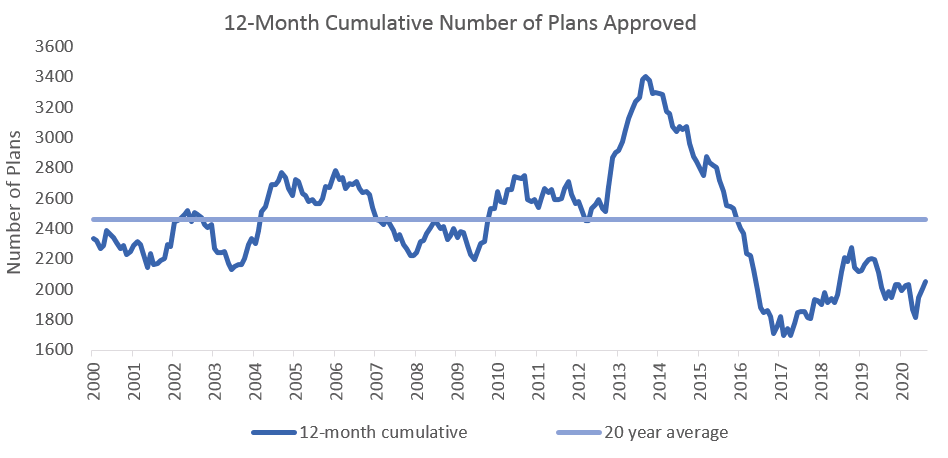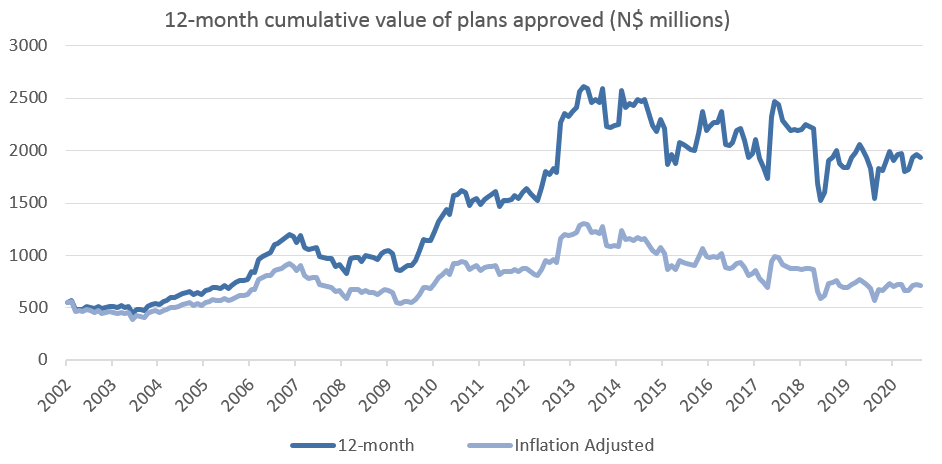
The Namibian annual inflation rate ticked up slightly to 2.4% y/y in August, following the 2.1% y/y increase in prices recorded in July. Prices in the overall NCPI basket increased by 0.4% m/m. On a year-on-year basis, overall prices in four of the twelve basket categories rose at a quicker rate in August than in July, with six categories recording slower rates of inflation and two categories recording increases consistent with the prior month. Prices for goods increased by 3.1% y/y while prices for services rose 1.5% y/y.

The food & non-alcoholic beverages category was the largest contributor to annual inflation in August, accounting for 1.2 percentage points of the total 2.4% annual inflation rate. The category recorded price increases of 1.2% m/m and 6.8% y/y. Prices in all thirteen sub-categories recorded increases on a year-on-year basis. The largest increases were observed in the prices of fruits which increased by 18.1% y/y and vegetables which increased by 12.3% y/y. The prices of meat products recorded a somewhat slower increase in prices at 9.9% y/y after seven consecutive months of faster increases on an annual basis. The rate of increase for this sub-category remains relatively elevated compared to average inflation of 2.8% over the last 12 months. On a monthly basis, the bread and cereals category recorded the highest inflation at 2.0% m/m, followed by fish which recorded an increase of 1.7% m/m.

Alcoholic beverages and tobacco prices, making up approximately 12.6 of the overall inflation basket, was the second highest contributor to the annual inflation rate in August, with prices of the basket item increasing by 3.6% y/y. On a month-on-month basis prices of the basket item fell by 0.7% m/m. Prices for alcoholic beverages fell by 0.8% m/m, but rose 3.4% y/y, while tobacco prices increased by 0.3% m/m and 4.7% y/y.
The education basket recorded inflation of 7.0% y/y, with the cost of pre-primary education growing at a rate of 5.6%. Primary and secondary education recorded price increases of 9.3% y/y, while tertiary education prices rose by 5.3% y/y. None of the three subcategories printed price increases on a month-on-month basis.

The NSA’s regional CPI data shows that on a monthly basis prices increased by 0.5% in the northern zone 1, 0.4% in the central zone and 0.3% in the mixed eastern, southern and western zone. On an annual basis the Windhoek and surrounding area, in zone 2, recorded the highest inflation rate at 2.9% y/y in August, with the mixed zone 3 recording the lowest rate of annual inflation at 1.5% y/y. Inflation in the northern region ticked up to 2.5% y/y.

As expected, the Namibian inflation rate recorded a slight uptick to 2.4% y/y in August. Inflationary pressure thus remains weak and continues to trend below South African inflation. The main driver of inflation in the last couple of months has been food inflation which has been averaging 4.3% y/y since the beginning of the year. The increase in fuel pump prices in August had a rather muted effect on overall inflation as fuel prices still remain lower than at the same time last year.
IJG’s inflation model forecasts an average inflation rate of 2.3% y/y in 2020 and 3.8% y/y in 2021. The biggest risk to our inflation forecast is global oil prices, although a large increase in prices seems unlikely at this point seeing that OPEC had again revised its forecast for global oil demand down by another 400,000 barrels per day to 90.2 million barrels per day. We do not expect landlords to push up rental prices any time soon either as many consumers will not be able to afford it and landlords will want to keep vacancies to a minimum. With these being the larger categories of the inflation basket, we thus do not foresee any sudden increases in Namibian inflation in the short-term.












